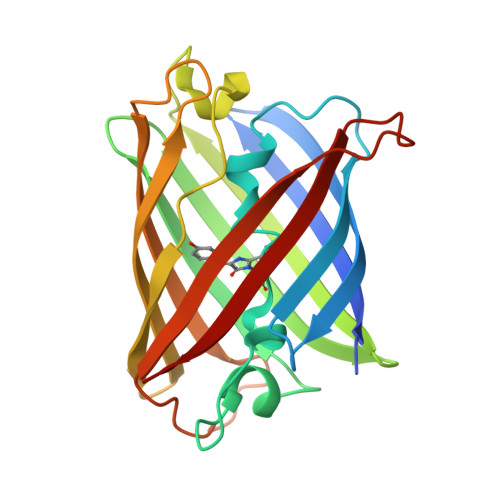StayGold variants for molecular fusion and membrane-targeting applications.
Ando, R., Shimozono, S., Ago, H., Takagi, M., Sugiyama, M., Kurokawa, H., Hirano, M., Niino, Y., Ueno, G., Ishidate, F., Fujiwara, T., Okada, Y., Yamamoto, M., Miyawaki, A.(2024) Nat Methods 21: 648-656
- PubMed: 38036853
- DOI: https://doi.org/10.1038/s41592-023-02085-6
- Primary Citation of Related Structures:
8ILK, 8ILL - PubMed Abstract:
Although StayGold is a bright and highly photostable fluorescent protein, its propensity for obligate dimer formation may hinder applications in molecular fusion and membrane targeting. To attain monovalent as well as bright and photostable labeling, we engineered tandem dimers of StayGold to promote dispersibility. On the basis of the crystal structure of this fluorescent protein, we disrupted the dimerization to generate a monomeric variant that offers improved photostability and brightness compared to StayGold. We applied the new monovalent StayGold tools to live-cell imaging experiments using spinning-disk laser-scanning confocal microscopy or structured illumination microscopy. We achieved cell-wide, high-spatiotemporal resolution and sustained imaging of dynamic subcellular events, including the targeting of endogenous condensin I to mitotic chromosomes, the movement of the Golgi apparatus and its membranous derivatives along microtubule networks, the distribution of cortical filamentous actin and the remolding of cristae membranes within mobile mitochondria.
Organizational Affiliation:
Laboratory for Cell Function Dynamics, RIKEN Center for Brain Science, Wako-city, Japan.

















